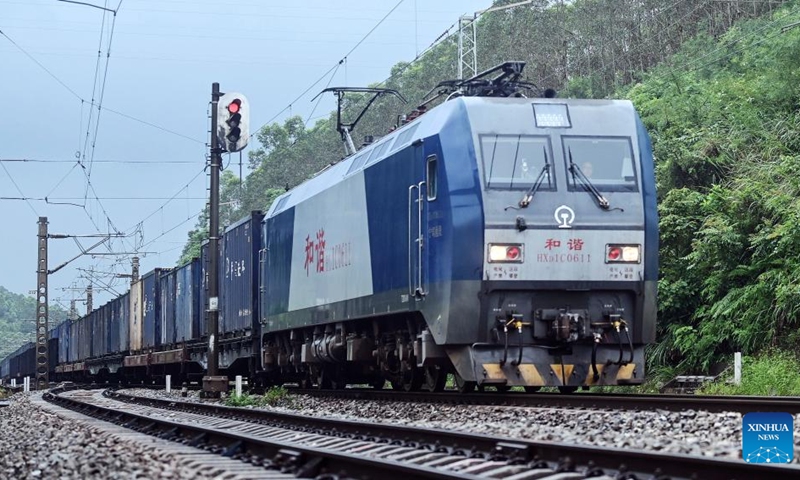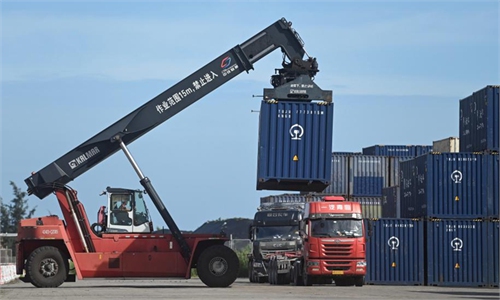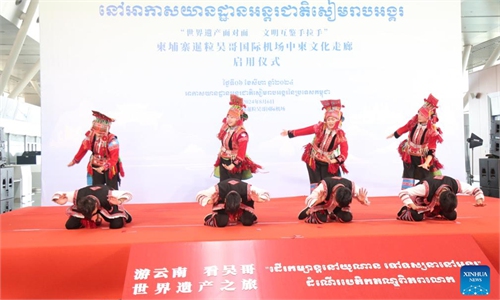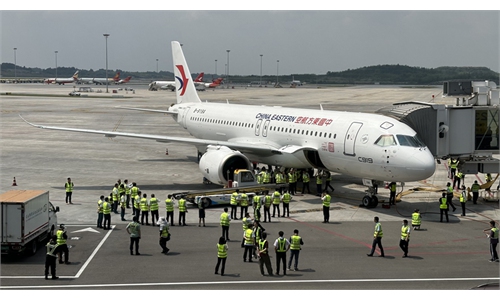
A train runs on the railway that constitutes part of the New International Land-Sea Trade Corridor on Aug. 2, 2024. As of Aug. 2 this year, more than 500,000 twenty-foot equivalent unit (TEU) containers for rail-sea intermodal transportation have been delivered via the New International Land-Sea Trade Corridor, the highest level for the same period in all years. The New International Land-Sea Trade Corridor, jointly built by provincial-level regions in western China and ASEAN members, expanded its reach to 490 ports across 120 countries and regions, according to data released in January by southwest China's Chongqing Municipality, the corridor's operational hub. Photo: Xinhua
China's General Administration of Customs (GAC) reported on Tuesday that in the first 10 months of 2024, it cleared 6,525 China-Laos Railway runs and 1,700 China-Vietnam Railway runs, each showing substantial year-on-year growth, highlighting the expanded international rail transport capacity of the new western land-sea corridor.
In the first 10 months, the number of China-Laos railway runs rose 36.5 percent year-on-year, while China-Vietnam railway runs were up 47 percent. Overall, the operational efficiency of the rail services increased by more than 60 percent, the Xinhua News Agency reported.
In the first 10 months, China's total trade via the new western land-sea corridor amounted to 1.15 trillion yuan ($158 billion), up by 8.8 percent year-on-year and exceeding the national average growth rate by 3.6 percentage points. The corridor's operational quality and efficiency are continuously improving, according to the GAC.
More and more specialty agricultural products from western China have reached the international markets. According to customs data, export of agricultural goods along the new western land-sea corridor stood at 26.88 billion yuan in the first 10 months, a rise of 12.3 percent year-on-year.
Key exports include flowers from Yunnan Province, lemons from Chongqing Municipality and wine from Northwest China's Gansu Province, Xinhua reported.
"Our land-sea corridor focuses on Southeast Asia, Japan and South Korea, partially offsetting trade declines with the US and Europe while opening up new trade opportunities. Most lines along the corridor support both freight and high-speed passenger services on routes like the one to Laos," Sun Zhang, a railway expert at Shanghai Tongji University, told the Global Times on Tuesday.
Sun noted that in the past, China's central and western regions were landlocked, with limited transportation options and no seaports. "Now, we've established direct links between these regions and the Beibu Gulf. With seaport access, the country's central and western regions are now better positioned for enhanced international engagement," he said.
Trade routes are expected to expand further, with Latin America anticipated to be a significant area of growth for maritime trade, Sun noted.
This year marks the fifth anniversary since China released the overall plan on the new western land-sea transportation corridor. The corridor has developed three key transport modes: rail-sea intermodal, international rail and cross-border buses.
Starting from Chongqing, the corridor has connected more than 120 economies and 542 ports, with more than 30,000 train runs, and goods categories having expanded from 80 to 1,160. It drives growth in China's western region and creates new opportunities for Belt and Road Initiative partner economies.



